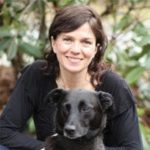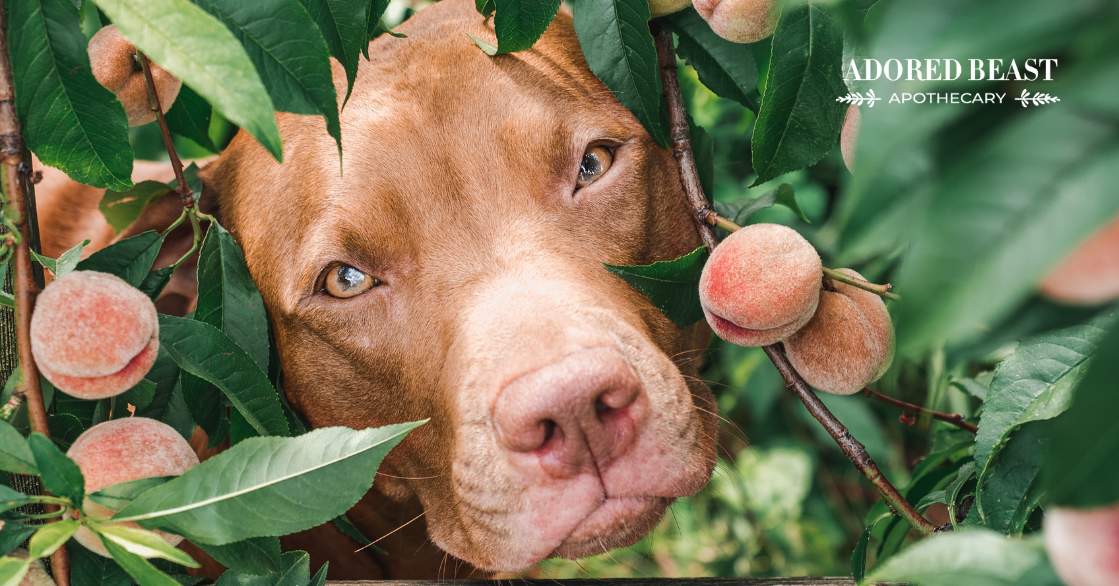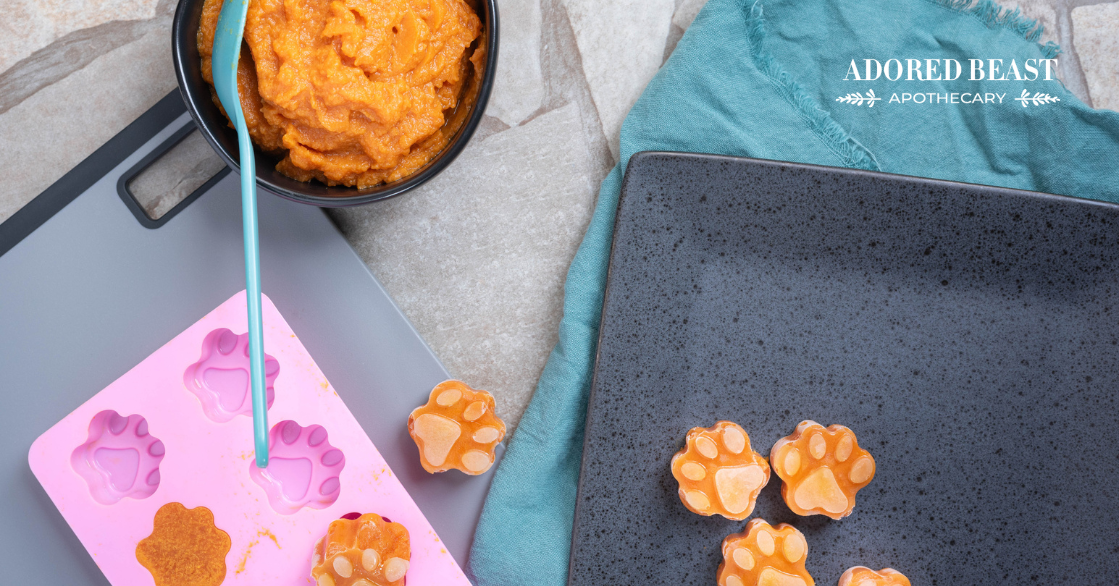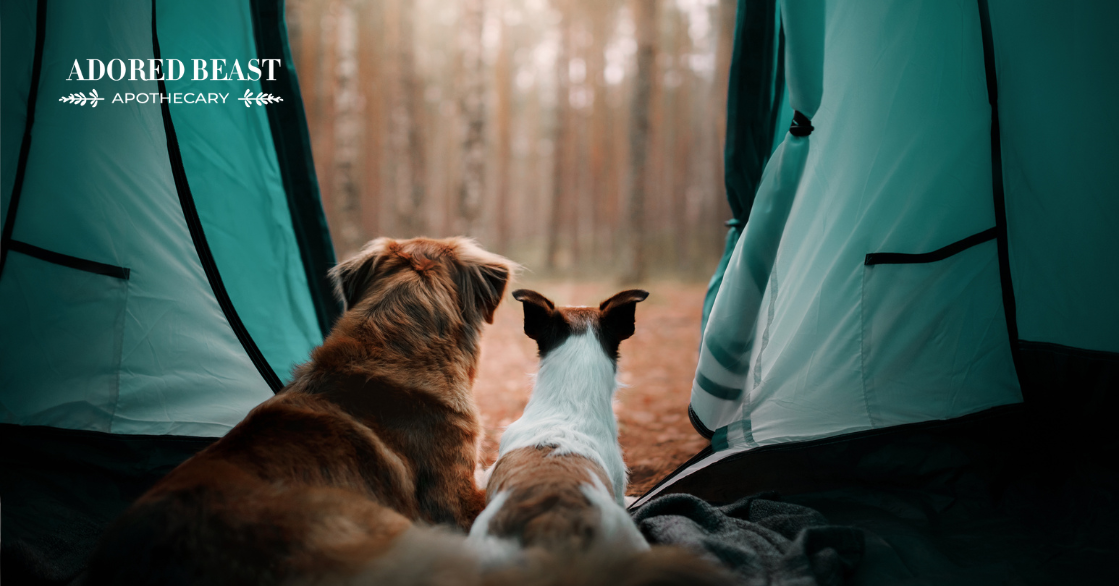Our beloved animals are our connection to nature, our ray of sunshine on a rainy day, sometimes even our lifeblood. Are we doing everything we can to keep them healthy? Or, are we preventing them from living the healthiest lives possible?
Holistic veterinarians, students and clients are often surprised by the way I practice homeopathy for animals, yet they’re equally surprised and happy with the results, especially in cases of deep-seated disease or severe pathology. I’m a diehard disciple of our great founder of homeopathy, Dr. Samuel Hahnemann. Thanks to homeopathic medicine, I’ve witnessed tens of thousands of life changing events with animals and their human families.
I also believe we live in a very different time than Dr. Hahnemann. I think we can all agree that times have changed since the turn of the 19th century, not only for us, but for our beloved animals as well.
Homeopathy in the 21st Century
Living a healthy lifestyle, for lots of us, is central to our wellbeing. We all do our best to avoid things that are harmful to us and do things we know are healthy and fun: we wear seat belts, helmets, drink safe bottled water, eat our fruits and vegetables, exercise, de-stress, have sex, drink smoothies, have a martini… I think you get the picture.
What would you do if your homeopath, naturopath, therapist or yoga teacher told you to stop smoking, put your cell phone down for at least two hours a day, or turn off your computer three hours before bed? What if they told you to stop eating at fast food restaurants, stop watching TV, stop using daily NSAIDs or unnecessary drugs, start meditating, and balance your stress? What if they said that, if you didn’t follow these instructions, you simply wouldn’t heal. What would you do?
In homeopathy, not abiding by these recommendations is considered hindering, or blocking, your ability to heal. In choosing not to live by them, we’re essentially standing in the way of our own health and healing. The great thing about being human is that we have free will: we can choose to help ourselves heal, or not to make healing a priority. But in the end, we do have the choice!
In Dr. Hahnemann’s day, these “healing blocks” were very different, and thanks in part to his work, we now take certain things as fact. No longer are these just basic recommendations – they’re modern scientific advancements, even government requirements. They’re things we wouldn’t dream of questioning.
Here’s the perfect example: if Dr. Hahnemann was treating a disease like chronic pneumonia, tuberculosis or bronchitis and his patient recovered brilliantly but the disease would constantly reoccur, he’d recognize that there was something keeping the patient sick. The homeopathic remedy would not lead to a full cure and would need to be repeated; this is called homeopathic palliation, which I’ll discuss later. He’d then observe the situation more closely to determine what was in the way of total healing. These scenarios led him to realize that living in a cold damp home was one such issue.
Here are some of the things Dr. Hahnemann noticed:
- Wet, damp, moldy homes
- Filthy living conditions
- Rat infestations
- Dirty drinking water
- Lack of personal hygiene
- Overdoses of mercury, etc. given by medical doctors
- Blood-letting by doctors
His personal view was that “by far the most frequent … of chronic ailments already existing are caused by grief and vexation.” As a medical doctor, Hahnemann was ahead of his time. He was constantly counseling his patients to:
- Wash
- Walk in nature to clear the mind
- Eat healthy food
- Stop seeing doctors who prescribed toxic drugs
- Move out of damp conditions
Can you imagine another doctor giving that advice in the 1800s? Sure, today this advice seems like simple common sense, but back then it would have seemed very odd indeed!
21st Century Homeopathy for Animals: My Philosophy
Think about your animal family as you would a person. Even though their anatomy is very different, especially their digestive systems, a cell is pretty much a cell. They’re very similar. What kills and damages our cells will also kill and damage our animals’ cells. Just as we choose to live healthier lives, we can follow a similar approach for our furry family members. They require healthy living conditions, minimal drug usage, and yes, low stress, and happiness just like us!
These are the things that I see as holding back the healing for your dogs and cats. These views come from my experience with over 35000 animals in the last 15 years at my holistic veterinary clinic. These beliefs may be controversial with some homeopaths and veterinarians. That’s ok, not everyone has to believe the same thing. But if they are, I apologize, but since “suppression” of any kind is one of the leading causes of disease, not to speak my truth is unhealthy, so here we go!
The Suppression of Natural Inclinations
Roll back the calendar 50 to 100 years – that’s not that long ago, when you think about it. In those days, dogs were allowed to run around and just be dogs. In England, they we were referred to as “open latch” or “open gate” dogs, the neighborhood dogs that everyone knew. They were given bones by the butchers, fed table scraps, they had sex, fights and puppies. Some grew to be old, but others died young from distemper. They didn’t visit the vet often, if at all, were not vaccinated, didn’t get monthly flea medication. Their lives were diverse, free, healthy, and wholesome.
In the 21st century, we’ve moved in the completely opposite direction. Today, most dogs are:
- Shut indoors for up to 23 hours a day.
- Often alone, leading to boredom, stress, and behaviour issues.
- Spayed and neutered before reaching puberty and before many body systems are developed: endocrine, glandular, hormones, skeletal… We can’t avoid the fact that we’re removing major organs that support growth and continued health. If they don’t develop properly there’s potential for long-term problems that can’t be cured because we simply can’t turn back time or stimulate organs that no longer exist (again another reason for a more eclectic way to work with homeopathy).
- Over-vaccinated and often vaccinated with an inappropriate dosage for their size and age!
- Given monthly pesticides for fleas and ticks, even if these “pests” are not a risk.
- Over-medicated, have too many “minor” surgeries and anesthesia.
- Eating dead, processed food.
- Not allowed to play vigorously with other dogs.
- Having their tails and ears docked (amputated).
- Constantly around cell phones and computers. I even know some toy breeds that sleep on top of the computer for heat!
So many dogs have lost their free will. They’re forced to be “polite,” meaning no growling at disturbances, no peeing on something they want to mark as their own. They can’t sniff people’s groins even though that’s where they get the most information!
If they had free will, most dogs would be living, eating and behaving very differently. So what do we do?
Homeopathy for Animals: Prescribing And Terminology
Homeopathic medicine is a very impressive, far-reaching methodology for health, with a long and celebrated history. Over the years, different ways of using homeopathic remedies have developed. These are the 3 most common types of homeopathic prescribing:
- “Classical” homeopaths are practitioners who give one single remedy and “watch and wait.”
- “Non-classical“ homeopathy is to give a single remedy that could be prescribed in many ways – for example, twice a day for a total of three days.
- “Complex prescribing” or “combination remedies” means several remedies mixed into one formula.
Many homeopaths choose one route and become staunch supporters of that one route. Some even go as far as to criticize the other approaches. Even I had this view at one point. When I first graduated, I was the first to scorn any of the non-classical approach! Then I opened my mind and heart to my two mantras: “above all do no harm“ and “the art and science of homeopathy.” I realized that to reduce suffering and pain as quickly and curatively as possible and provide the best quality of life possible, required the art and the science. I have truly seen miracles with classical and non-classical and combination approaches.
Another important term that I want to talk about is homotoxicology. Homotoxicology is a scientifically proven and extensively researched medical practice that studies the effects of toxic substances on the human body. It integrates new advances in modern medical science like pathology, toxicology, biology, enzymology, and immunology with homeopathic principles.
Some common examples of homotoxins that homeotoxicolgy would be applied to include:
- Mercury fillings in teeth
- Unhealthy microorganisms in the gut often caused by an unhealthy diet, hormone replacement therapy, and/or antibiotics
- Chronic yeast infections (Candida)
- Exposure to unhealthy electro-magnetic fields
- Air pollution
- Pesticides
- Undiagnosed bacteria such as salmonella
- Undiagnosed stomach infections
Homotoxicology began about 50 years ago in Germany and is now widely used around the world with tremendous success. The German physician Hans-Heinrich Reckeweg expanded homotoxicology into a medical theory based on an ancient Chinese concepts but integrates homeopathic dilution and remedies and remedy potentization.
Prophylactic – is the use of homeopathy as prevention. A few good examples are how Adored Beast’s Anti-Vaccinosis is used to try and derail the side effects of vaccines, giving the bordetella nosode to help protect against kennel cough, or Dr. Richard Pitcairn’s prophylactic parvo distemper protocol and the list goes on.
How I Practice Homeopathy for Animals
I believe homeopathy for animals gives us the ability to take a really good look at what’s ailing our adored beasts and choose a remedy (or remedies) that fits the unique situation. We viewed every case at our clinic with new eyes and every animal was treated as an individual.
Over the years it became clear that most of the animals we saw lived with some sort of healing block. My choice became to step over the lines of classical and non-classical prescribing, and look at the reality that all of my clients were doing their best with their adored animals. These animals were treated with love and respect but they still live in “our world” with the stresses and expectations we all face in the 21st century. They rarely complain, they revel in our love and give unconditionally back to us, but I wonder what they would do if they had free will?
My animals teach me to be still, patient, playful, show my anger with dignity, my sadness with intensity, and my love with child-like enthusiasm. They take things in stride while life gets in our way with cell phones, work, driving kids to soccer, stresses of marriage and money. Our animals are the sponges that soak up the stress. It’s not realistic to think we can remove all the things that are blocking healing we face with animals. We all have the best intentions, which our animals know and bless their hearts they adapt to so much (BUT IT DOES TAKE A TOLL). What remains is the damage done that we cannot fix (spay and neuter, over-vaccination, over-breeding, puppy mill defects like tiny tracheas, short palates and entropion…).
I know this sounds depressing but it’s not!
Homeopathy for animals can be given in a way that is a monthly, weekly, even daily as a gentle reminder to show the body what it needs to do to avoid pain; to remind the kidneys of their function, alert the thyroid gland and remind it that it needs to perform at a certain level – even though it’s missing its supporting hormones that come from testicles and ovaries. This can help the body not only survive, but thrive! I’ve seen everything from birth defects, severe skin disease, Cushing’s disease to cancer and beyond respond brilliantly to this type of homeopathic dosing and prescribing.
Homeopathic Palliation
To palliate is to is relieve or lessen without curing. This is where we get the term “palliative care.”
Palliation is when you continue to give a remedy daily or weekly to maintain the effect of the remedy. This is done in both conventional medicine and homeopathy – but please don’t confuse the two! Both “reduce the violence” of a disease and also ease symptoms without curing the underlying disease.
- Drug palliation: ( Which has its place and at times can be life saving !) it’s the “drug” that numbs the pain, suppresses the acid, stops the itch by suppressing your dog’s immune system, kills bacteria along with all the good flora that strengthen the immune system – and comes with a long list of side effects that require more drugs to treat them.
- Homeopathic palliation: reminds the body of what it has to do so it is the real ability of your dog’s body to stop the pain, stop the itch, to kill the bacteria and many times can even (in the case of trachea defects mentioned above) stimulate the trachea’s ability to work beyond its defective size! And the list goes on (with zero side effects or contraindications).
When we look at what some people say is “ true” homeopathy, your dogs could not be on thyroid meds or any other drugs on any level. I find this to be appalling and often when they need homeopathy the most – this can assist to counteract the side effects and support the body with chemo or surgery and is often what true integrative medicine is. This is not to say I agree with most of the way that drugs are given or that it’s an excuse to have someone that says they are a homeopath but is not experienced or qualified use drugs in place of a good prescription because that happens way too often.
So why do you hear that homeopathy for animals doesn’t work in the hands of many pet parents and veterinarians?!
In my opinion there are 3 reasons:
- The fear of god put into the student to do it the “correct way” based on one teaching
- Not having HANDS ON training.
- What might be the most important, which is experience, or more to the point literally a lack of clinical days, hours, years of homeopathy being the primary modality of medicine. Less than 3% of trained homeopathic veterinarians practice homeopathy as a primary modality. I feel it sets them up to fail and loose faith. This is so sad and such a shame and a real loss for the ethical, safe, and incredibly effective way homeopathy can help all of us.
As for pet parents, I feel like they haven’t been given clear enough guidelines by their teachers on how to approach issues using homeopathy for 2 reasons:
- The teacher being afraid of being judged by their homeopathic association.
- The teacher afraid of getting in trouble by their conventional association for giving too much information. These poor guys are dammed if they do, dammed if they don’t.
Homeopathy is Under Attack
I would love to be able to say that homeopathy is a widely accepted medicine. That the success of the multitude of remedies is celebrated by conventional and holistic doctors alike. Unfortunately, that just isn’t the case.
Of course, we need Western conventional medicine for certain situations and yet I’m not alone in my opinion that homeopathy is the most powerful medical modality in the world:
“The World Health Organization has cited homeopathy as one of the systems of traditional medicine that should be integrated worldwide with conventional medicine in order to provide adequate global health care by the year 2000.”
“According to World Health Organization (WHO), homeopathic medicine is the second most widely used system of medicine in the world and is fastest growing.”
Those quotes are from the early 2000s and yet homeopathy for animals (and humans, of course) is under attack. I see two reasons: When a modality of medicine can kill a difficult bacteria like pseudomonas, stop hemorrhagic gastroenteritis, deal with skin disease, dissolve crystals, provide incredible quality of life in cancer, help to resolve shock leading to death it becomes a target for companies and associations that survive financially on all of those diseases to create fear and close people’s minds and hearts.
The second, saddest reason is that historically, there’s a belief that homeopathy for animals requires you to commit to one side of the fence or the other. Either you’re a classical homeopath or you’re not. The tension between the two weakens the energy of the entire modality and keeps it stuck in a place of “quackery” in the allopathic eye.
I‘m going to leave you with a quote from Dr. Hahnemann that sums up my opinion on monthly, weekly, daily dosing: “Owing to these causes, therefore, and in order to make the cure possible, the homeopathic practitioner must yield to circumstances in his prescriptions as to diet and mode of living, and in so doing he will much more surely and therefore more completely, reach the aim of healing than by an obstinate insistence on strict rules, which in many cases cannot be obeyed.”
Well, as an animal, you can’t obey if you don’t have free will and you’re surgically sexually altered! I wish that all holistic animal practitioners could just agree on one thing: “Above all do no harm” and support each other in our beliefs, in our art and science and together as a whole and we can bring the change to animal health and happiness we all want to see.












